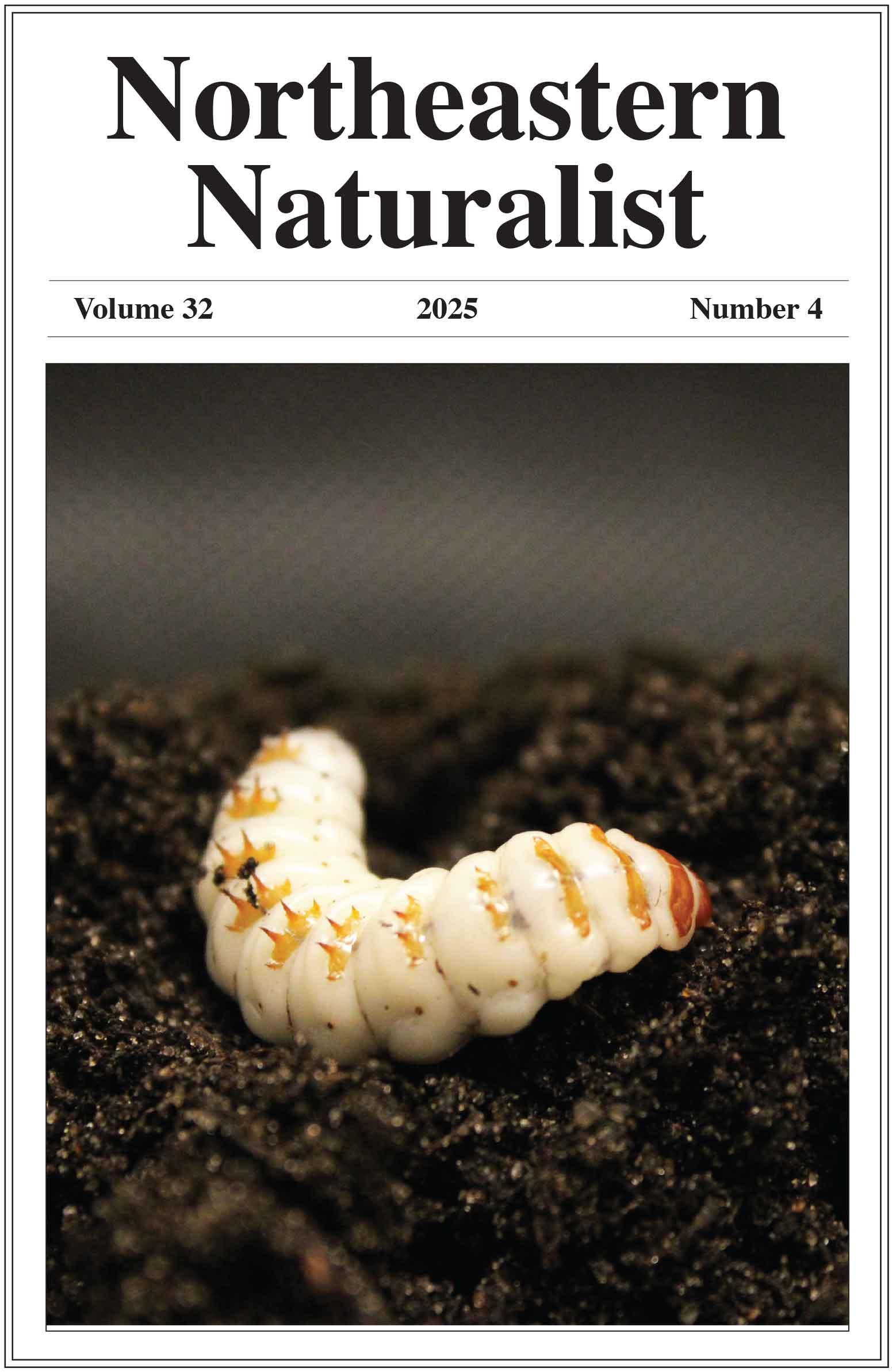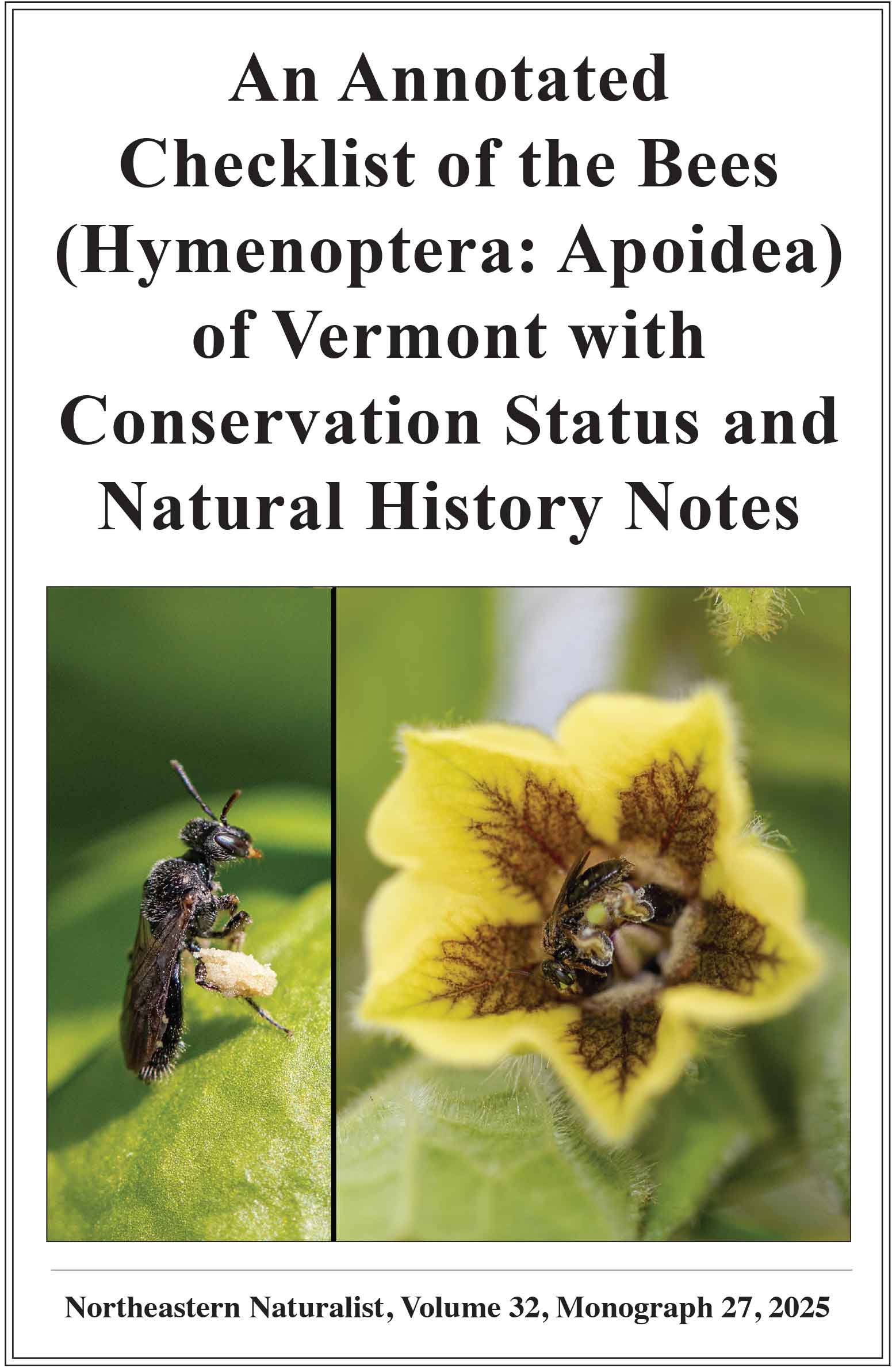Demography and Movements of the Southwestern Pond Turtle (Actinemys pallida) in the Río Santo Domingo Watershed, Baja California, Mexico
Michael T. Jones1,2,*, Jorge H. Valdez-Villavicencio3, Anny Peralta-García3, Lisabeth L. Willey2,4, Rodrigo Macip-Ríos5, Thomas S.B. Akre6, and Erika Gonzalez-Akre6
1American Turtle Observatory, 90 Whitaker Road, New Salem, MA 01355. 2Department of Environmental Conservation, University of Massachusetts, Amherst, MA 01003. 3Conservación de Fauna del Noroeste, A.C., Ensenada, Baja California, 22897, México. 4Antioch University New England, Keene, NH 03431. 5Escuela Nacional de Estudios Superiores, Unidad Morelia, Universidad Nacional Autónoma de México, Antigua Carretera a Páztcuaro, No. 8701, Col. Ex Hacienda San José la Huerta, Morelia, Michoacán, 58190, México. 6Smithsonian National Zoo and Conservation Biology Institute, Front Royal, VA 22630. *Corresponding author.
Northeastern Naturalist, Volume 31, Special Issue 12: E151–E164
First published early online: 18 December 2024
Abstract
We studied a remote and robust population of Actinemys pallida (Southwestern Pond Turtle) in the upper Río Santo Domingo (RSD) watershed, Sierra San Pedro Mártir, Baja California, Mexico. We conducted cursory assessments in 2014 and 2015 and intensive trap-based surveys in 2016 and 2022. We captured and marked 486 unique turtles a total of 597 times. Using closed-population models within years, we estimated the total abundance of one 3.8-km study reach to be 511.1 (CI = 395.7–686.5) turtles in 2016 and 663.8 (467.2–1011.0) turtles in 2022, equivalent to instream densities of 134.5 turtles/river-kilometer (rkm) in 2016 and 174.7 turtles/rkm in 2022. The proportion of juveniles among detected turtles was 0% in 2014, 4.6% in 2015, 21.7% in 2016 and 19.6% in 2022. In 73.5 trap-nights (TN), we recorded 532 captures, equivalent to an average of 7.24 turtles/TN or 0.30 turtles/trap-hour. The RSD population appears to be one of the largest known in Baja California and is relatively large across the range of the Southwestern Pond Turtle. Thirty-three turtles recaptured more than 1 year apart had moved up to 1.6 km downstream and 2.3 km upstream, averaging a net upstream movement of 240 m. Adult males and females both had an average straight carapace length (SCL) of 112 mm, which is small for Southwestern Pond Turtles, but expected in the regional context. In addition to a regionally significant population of Southwestern Pond Turtles, this isolated, perennial watercourse supports a micro-endemic fish and 2 regionally rare amphibians and warrants protection as a globally significant biodiversity reserve.
![]() Download Full-text pdf (Accessible only to subscribers. To subscribe click here.)
Download Full-text pdf (Accessible only to subscribers. To subscribe click here.)
Access Journal Content
Open access browsing of table of contents and abstract pages. Full text pdfs available for download for subscribers.
Issue-in-Progress: Vol. 33(1) ... early view
Check out NENA's latest monograph and Special Issue:













 The Northeastern Naturalist is a peer-reviewed journal that covers all aspects of natural history within northeastern North America. We welcome research articles, summary review papers, and observational notes.
The Northeastern Naturalist is a peer-reviewed journal that covers all aspects of natural history within northeastern North America. We welcome research articles, summary review papers, and observational notes.